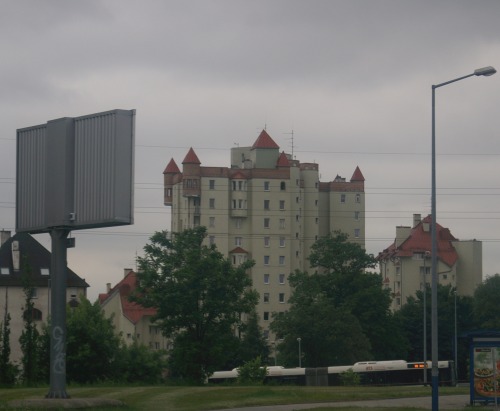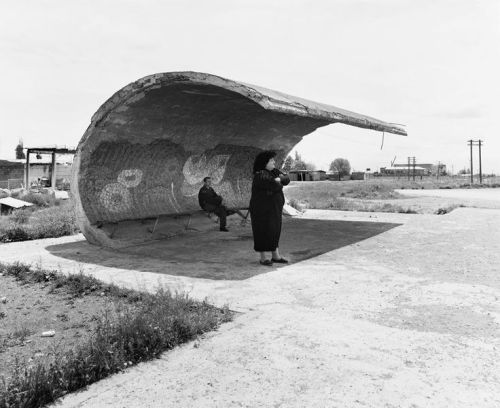 These are some of the charts and graphs created by Michigan State University computer science graduate student Randal S. Olson (links to his page with waaaay more in depth information) showing the quickest way to spot Waldo in the seven main Where's Waldo books. You know, why is it my responsibility to find Waldo anyways? I don't even know him. I don't care where he is or what he's doing. Besides, if you want to find Waldo the quickest every time you don't even need math, you just need to point anywhere and yell, "There he is!" and turn the page before anybody can prove you wrong. Now that's some real math.
Thanks to Alicia, who agrees those Magic Eye books are where it's really at anyways.
These are some of the charts and graphs created by Michigan State University computer science graduate student Randal S. Olson (links to his page with waaaay more in depth information) showing the quickest way to spot Waldo in the seven main Where's Waldo books. You know, why is it my responsibility to find Waldo anyways? I don't even know him. I don't care where he is or what he's doing. Besides, if you want to find Waldo the quickest every time you don't even need math, you just need to point anywhere and yell, "There he is!" and turn the page before anybody can prove you wrong. Now that's some real math.
Thanks to Alicia, who agrees those Magic Eye books are where it's really at anyways.diogofalmeida
Shared posts
The Math Of The Optimal Where's Waldo Search Pattern
 These are some of the charts and graphs created by Michigan State University computer science graduate student Randal S. Olson (links to his page with waaaay more in depth information) showing the quickest way to spot Waldo in the seven main Where's Waldo books. You know, why is it my responsibility to find Waldo anyways? I don't even know him. I don't care where he is or what he's doing. Besides, if you want to find Waldo the quickest every time you don't even need math, you just need to point anywhere and yell, "There he is!" and turn the page before anybody can prove you wrong. Now that's some real math.
Thanks to Alicia, who agrees those Magic Eye books are where it's really at anyways.
These are some of the charts and graphs created by Michigan State University computer science graduate student Randal S. Olson (links to his page with waaaay more in depth information) showing the quickest way to spot Waldo in the seven main Where's Waldo books. You know, why is it my responsibility to find Waldo anyways? I don't even know him. I don't care where he is or what he's doing. Besides, if you want to find Waldo the quickest every time you don't even need math, you just need to point anywhere and yell, "There he is!" and turn the page before anybody can prove you wrong. Now that's some real math.
Thanks to Alicia, who agrees those Magic Eye books are where it's really at anyways.New Horror Anthology Holidays Secures Kevin Smith, Among Others
diogofalmeidaO Red State é bem fraquinho. A ver como está o novo.

I do not need to tell you that horror anthologies are popular again. We have had any number over the past few years, some good and some dire, but all relying on often interconnected short stories to tell an overarching history of terror. The nice thing about anthology films is that you can get a lot of stars and directors in to work on them, producing a unique vision from a multitude of styles and approaches to the genre. The latest horror anthology will be Holidays, from XYZ Films, and it has secured a bevy of directors to contribute.
Holidays takes a step away from the usual Halloween themed films and expands it to encompass more holidays, including Easter, Christmas, Valentine’s Day, and Mother’s Day as candidates for horrific murder and mayhem. The participating directors now include the likes of Kevin Smith, Gary Shore (Dracula Untold), Scott Stewart (Legion, Priest), Matt Johnson (The Dirties), Dennis Widmyer and Kevin Kolsch (Starry Eyes), Nicholas McCarthy (At The Devil’s Door), Sarah Smith (The Midnight Swim) and Anthony Scott Burns. Smith we know is no stranger to the horror genre, having directed last year’s Tusk and Red State before that. The others directors are decidedly lesser known in a mainstream sense, but we can hope they’ll produce some worthwhile entries.
Looking at this list, however, we have to notice that there are already eight directors attached to this production, with more to be announced. That means that the segments will not be very long in a film that should run somewhere around two hours. Whether that is good or bad will remain to be seen, but I admit that I prefer the interconnected and developed narratives of films like Trick ‘R Treat. I just hope Holidays doesn’t rush things.
Holidays does not have a release as yet, but you can check out the very cool, slightly retro poster for the film below.

10 Amazing Lost Treasures That You Can Still Find
 (Image: via Pixabay, public domain)
(Image: via Pixabay, public domain)
X might rarely mark that spot, but that certainly doesn’t mean there’s any lack of treasure out there just waiting to be found. And sometimes, there really is even a map and some carefully worded clues, all just waiting to be deciphered.
10. Forrest Fenn’s Treasure
Forrest Fenn is a retired art dealer from Santa Fe, New Mexico, and if he’s not certifiably awesome, then no one is.
Diagnosed with cancer in 2010, he decided that he was going to leave behind something epic. So he filled a chest with gold nuggets (some as big as eggs), pre-Columbian gold animal statues, and 17th century jewelry. Then, he buried it somewhere in the American west.
 (Image: Facebook)
(Image: Facebook)
His cancer is thankfully in remission, but he still had no idea how long it was going to take anyone to find the treasure – even with the clues he left behind. Coded into a poem are supposedly the directions to find his treasure, but no one’s gotten there yet. Knowing that he very well may die before anyone finds his loot, he included a copy of his autobiography in the chest, along with a life’s worth of pictures and a few strands of his fair, so DNA testing could unlock every mystery about the man who buried his treasure in the west.
So far, he’s given some clues to help narrow down the search. It’s somewhere in the Rocky Mountains, north of Santa Fe, and not in Canada, Utah, Nevada or Idaho. It’s more than 5,000 feet above sea level.
He’s received literally tens of thousands of emails asking for more help, but he’s not giving up his secrets. Even his wife doesn’t know where the treasure is hidden, but with the value of the treasure increasing every year it’s out there, Fenn says he’s going back for it when it hits the $10 million mark.
9. The Treasures of Cocos Island
 (Image: UK Admiralty, public domain)
(Image: UK Admiralty, public domain)
Cocos Island is a UNESCO World Heritage Site, and the tropical paradise sits off the coast of Costa Rica. According to the legends, it’s the final resting place of millions of dollars of buried pirate treasure.
The most notorious of these hoards is the Treasure of Lima. Worth an estimated £160 million, it was supposedly buried on the island in 1820 by a trader turned pirate named William Thompson. Thompson was hired to take the treasure – which included more than 100 gold statues, 200 chests of gold and countless bars of gold and silver – from Peru to Mexico. Instead of transporting it, he stole it and was rumored to have buried it on the island – only, it’s never been found.
The island is also rumored to have been a haunt for pirates throughout the decades they were known for patrolling the Caribbean in search of riches. Captain Edward Davis is said to have used the island pretty regularly to stash his loot until the heat died down, and Portuguese pirate Benito Bonito is said to have left a massive, massive treasure hoard on the island.
 (Image: J. Rawls, cc-4.0; above: carving said to point the way to hidden treasure)
(Image: J. Rawls, cc-4.0; above: carving said to point the way to hidden treasure)
The island has definitely been explored, by countless people over the decades. One man, August Gissler, spent 19 years searching the island for the lost treasure. He walked away with a couple of gold coins for his trouble. In 1856, a group of treasure hunters were reported to have been successful when they unearthed a chest full of gold doubloons.
Now, treasure hunting is forbidden on the island, although scientific research isn’t. There are regular expeditions to the island, not only with the intent of finding buried treasure (although certainly, that would be a bonus), but also to study the incredibly unique ecosystem of the island.
8. The Irish Crown Jewels
 (Image: Royal Irish Constabulary via Jeremy Turcotte, public domain)
(Image: Royal Irish Constabulary via Jeremy Turcotte, public domain)
The term “crown jewels” can be a little misleading, as in this case. The Irish Crown Jewels didn’t involve a crown of any sort and weren’t even associated with the coronation ceremonies that are usually thought of in connection with such regalia. Instead the set, which included a jeweled star, five gold collars and a diamond brooch, all belonged to the Order of St. Patrick. The jewels were the responsibility of the Ulster King of Arms, and on July 6, 1907, it was discovered they had been stolen.
For years, the jewels had been kept in a bank vault – it was only four years before the theft that they were moved to a safe in the library of Dublin Castle. At the time, the master of the keys was a man named Sir Arthur Vicars.
 (Image: Royal Irish Constabulary via Jeremy Turcotte, public domain)
(Image: Royal Irish Constabulary via Jeremy Turcotte, public domain)
Vicars, holding a position that had been instituted in 1552, was immediately accused of not taking all the proper precautions when it came to securing the jewels. There were two keys for the safe: one he carried with him all the time, and a few months before the theft, he’d rather lost track of the other. The second key, normally kept in a locked drawer in his personal desk, got attached to a key ring with a series of other keys. They were found by a maid, and returned to his possession. That was in May of 1907 – two months later, the jewels were gone. They were last seen on June 11, and confirmed missing on July 6.
According to Vicars, the culprit was one of his other heralds – Francis Shackleton, brother to the famed Arctic explorer. While it’s never been confirmed (in spite of Shackleton’s rather checkered life and poor reputation), it was Vicars who got the worst of the blame. He was ultimately removed from his position amid rumors of being at the center of some rather sordid, scandalous orgies at Dublin Castle. In 1921, Vicars, who was living at an estate house in County Kerry, was shot and killed by the IRA.
 (Image: Royal Irish Constabulary, public domain)
(Image: Royal Irish Constabulary, public domain)
The jewels have never been recovered. Today, it’s thought that it’s pretty likely that Shackleton (who disappeared in 1915 after being imprisoned on another charge) was responsible for the theft. With the high profile of the jewels, it’s likely that they were broken apart and sold, but they’re still out there… somewhere.
7. The Lost Confederate Gold
 (Image: via New Georgia Encyclopedia)
(Image: via New Georgia Encyclopedia)
According to legend, the southern part of the United States is filled with hoards of Confederate gold just waiting to be discovered. Throughout the Civil War, Georgia was producing massive amounts of gold; when Union troops were threatening, much of the gold was hidden to keep it out of northern hands. When Richmond, Virginia was captured by the Union, the Confederate treasury was empty – and much of it is still said to be up for grabs.
At the end of the war, Jefferson Davis was heading south with nearly half a million in gold and silver coins. The money was destined for the pockets of loyal Confederate soldiers, and some of it reached the men it was meant for. Before it could all be distributed, though, the caravan was attacked and robbers made off with what was left – about half. While some was recovered, a good amount is still missing.
 (Image: Peter Clericuzio, cc-sa-3.0)
(Image: Peter Clericuzio, cc-sa-3.0)
And this treasure isn’t mythical. In 1977, an Arkansas man decided that it was about time he did something to find the treasures that his grandfather told him stories of as a boy. Bob Brewer has retraced the steps of a Civil War era group called the Knights of the Golden Circle, and in the process of following in their footsteps – and unraveling the secrets that have been passed down through his family – he’s unearthed hundreds of thousands of dollars in Confederate gold coins.
6. The Oak Island Treasure
This one’s a bit different, in that we theoretically know where the treasure is, we just don’t know what it is.
In 1795, a group of men came across something odd on Nova Scotia’s Oak Island. They found a pulley, and nearby was a section of ground that looked rather sunken. They started digging, and found what seemed like a man-made hole that had been purposefully blocked by a layer of logs every 10 feet or so.
Over the next decades, others have had a go at excavating the pit. The deeper it’s dug, the more it flooded, though, and it was thought to be booby-trapped. But no one would have gone through the trouble of protecting the hole if there wasn’t something truly amazing at the bottom of it, so digs continued.
 (Image: Richard McCully, public domain)
(Image: Richard McCully, public domain)
Now, more than two centuries later, the treasure hunt continues. What started out with a dig using picks and shovels has been updated to use computer imaging and ground-penetrating radar, but the mysteries of the pit haven’t been cleared up in the least. Skeptics say that it’s nothing more than naturally occurring phenomenon, but believers that there’s something down there have a whole slew of suggestions as to what it might be. Theories are all over the place – some people believe that the pit was dug by early visitors to the island, like the Vikings, while others think it’s the location of pirate treasure. Others suggest it has something to do with the Knights Templar, and that it’s the hiding spot for the Holy Grail.
5. The Bones of the Peking Man
In the 1930s, archaeologists working near Beijing uncovered one of the most important finds in the history of our species. They discovered the remains of 40 people, dating them to 770,000 years ago. The oldest examples of ancient humans that have ever been discovered, the remains were packaged and shipped to the United States in 1941.
They never got there.
Before they were packed off and shipped on their way – presumably for safekeeping during the eminent war that was looming – casts were made of the bones. When you see an exhibition of the Peking Man today, all you’re seeing are the casts.
 (Image: José-Manuel Benito Álvarez, public domain)
(Image: José-Manuel Benito Álvarez, public domain)
Over the following decades, there have been a number of theories as to where the bones are today but, at the end of the day, we don’t even really know how far along their journey they made it before they disappeared. One statement made by a Marine indicated that he found the fossils while he was in the city of Qinhaungdao. Not knowing what else to do with a box of human remains, he buried them.
Other theories suggest that the bones were destroyed one way or another on their journey, another casualty of the war. They may have been seized as trophies, or they may have been sunk with the rest of the cargo on their doomed ship, or they may have been destroyed. Formal inquires from governments and scientific organizations have uncovered no trace of the fossils and no new information that’s anything more concrete than speculation.
4. The Ivory Coast’s Crown Jewels
 (Image: via BBC)
(Image: via BBC)
Much like Ireland’s Crown Jewels, the collection of artifacts that was stolen in 2011 was much, much more than a crown and a sceptre. More than 80 pieces belonging to the Ivory Coast royalty was stolen from the Museum of Civilizations in what experts suspect was a theft planned with help from the inside.
Among the oldest items were 12 necklaces from the 17th century, and 35 gold ones from the 18th century. There were also gold boxes, swords, tribal masks, religious artifacts, and a head dress.
There’s still considerable hope that the treasures will show up. Unlike treasures past, all of the artifacts are completely documented, and documentation is shared with museums around the world – along with organizations that thieves might try to use to move the artifacts through. While timing for a theft like this is never good, this one was particularly unfortunate. Recently through a governmental power struggle, museum curators say that the crown jewels were a symbol of a nation – and a people – in desperate need of reestablishing their cultural identity.
3. The Missing Faberge Eggs
Around the turn of the 20th century, members of the Russian Imperial family commissioned and purchased a series of exquisite – and expensive – Faberge eggs. The eggs, all unique, were presented as gifts to different members of the family. There were about 66 eggs in total, and when the Bolsheviks came to power and the royal family fell, the eggs were scattered.
Most of them were stored in the Kremlin Armoury, while family members took others with them as they fled Russia. A handful of others were looted, and disappeared completely. When Stalin rose to power, he saw the eggs not as cultural treasures but as a way to make some pretty serious money, and put many of them up for sale – in spite of attempts made by Kremlin curators to hide some of the eggs to keep them in their homeland.
We know where many of the eggs ended up, but some are still missing – and, unlike some treasures that seem to show little sign of being found, we know that the eggs are absolutely still out there. In March 2014, an anonymous man from the Midwestern United States took a gamble on a gold egg he saw at a rummage sale. It turned out to be the third in the series of eggs, the long-missing token of love given to Tsarina Maria Feodorovna by her husband, Tsar Alexander III.
His swap meet purchase turned out to be worth millions.
Other eggs are still missing, and while it’s thought that some have been destroyed over the decades, it just goes to show that you never know what you’re going to find at a rummage sale.
2. Nazi Gold and Hitler’s Diamonds
 (Image: Karl Hammer Kaatee)
(Image: Karl Hammer Kaatee)
There’s plenty of lost treasure from World War Two; rumours of Nazi gold, stolen artifacts and long-lost paintings continue decades after the war. One very specific treasure are the gold bars and diamonds from Hitler’s personal stash – and according to some, the clues to find it are out there.
According to the story, at the end of World War Two Hitler’s elite took possession of his personal treasure – including more than 100 bars of gold and a set of diamonds known as the “tears of the wolf”. The treasure, assumed to be bound for Heinrich Himmler’s hands, disappeared somewhere in Bavaria, and for decades, people have been scouring the area looking for the lost gold and diamonds.
 (Image: Karl Hammer Kaatee via the Guardian)
(Image: Karl Hammer Kaatee via the Guardian)
Recently, a Dutch writer revealed that he had uncovered what he believed was essentially a treasure map, cleverly coded into a piece of sheet music. The music, Gottfried Federlein’s Marsch-Impromptu, was annotated with strange markings and seemingly random scribbles. Convinced that the margin notes of the sheet music refer to the treasure’s ultimate location, entrepreneurs think they’ve narrowed the location down to Mittenwald, Bavaria. A few test holes have been dug and nothing’s been found so far, but that hasn’t stopped groups from all over from descending upon the town with treasure-hunting equipment in hopes of finding Hitler’s lost gold.
Of course, there’s more than a piece of sheet music that ties Bavaria to the lost Nazi treasure. The region was once destined to be the home of an elite SS fortress built by Himmler; it’s a logical place for treasure to have ended up, and in some cases, it’s the last place some of it was seen.
1. Hundreds of Lost Films
 (Image: Southend Film Festival via the Guardian; above: Death of a Salesman)
(Image: Southend Film Festival via the Guardian; above: Death of a Salesman)
Not all treasures consist of gold, silver and jewels, and not all treasure hunters have to go off to some exotic island or scour the bottom of the ocean to find their stash. In fact, these lost treasures might be sitting in your attic right now.
It’s estimated that somewhere between 50 and 70 percent of all films made before 1950 have been lost – the farther back you go, the higher that percentage gets. And that doesn’t just mean there are missing film starring people that no one’s ever seen or heard from since. There’s missing films from Alfred Hitchcock and Orson Welles, and until recently, there were a handful of missing Peter Sellers films, too. In 2014, two of his movies made their debut after being saved from a dumpster – after they’d sat in a janitorial closet for decades. No one had given the canisters a second look until an office renovation, when the long-lost movies were discovered.
 (Images: Central New York Playhouse, cc-4.0; Southend Film Festival)
(Images: Central New York Playhouse, cc-4.0; Southend Film Festival)
So what’s missing? It’s hard to tell, really, as there’s countless movies that no one remembers that are simply gone. The British Film Institute has a site for their most wanted films that we do know about, and they include some pretty hefty titles. Missing is the first film adaptation of Sherlock Holmes, A Study in Scarlet. There’s the 1919 The First Men in the Moon, notable as being the very first of H.G. Wells’ films. Alfred Hitchcock’s second film, The Mountain Eagle, is long missing, along with The Last Post, the first film by Britain’s first female director, Laurence Olivier’s first British film, 1930’s Too Many Crooks, and the first film of Errol Flynn, 1935’s Murder at Monte Carlo.
There’s hundreds, if not thousands. Missing films have turned up in archives all over the world, they’ve surfaced in basements, in attics, in museums. Some of them could be in your attic.
The post 10 Amazing Lost Treasures That You Can Still Find appeared first on Urban Ghosts.
Have you and your kids had “The Talk?”
Something to consider the next time you consider staying at a Holiday Inn Express on your next family vacation…
When I first saw the above note on reddit, I experienced a bit of déjà vu. It took me a sec to figure out why…
related: Bears, birds & bees at Glacier National Park
Great Job, Internet!: Now you can play 2,400 MS-DOS classics in your browser

The Internet Archive has gone live with a collection of nearly 2,400 MS-DOS games that are playable directly in your browser. The gory details of the project can be found over at the blog of the man behind the project, Jason Scott, but the long and short of it is that now anyone can play games like Duke Nukem 3D, Lemmings 2, The Lost Vikings, Cannon Fodder 2, Wolfenstein 3D, The Incredible Machine 2, Total Carnage, Tyrian, Red Baron and Raptor—Call of the Shadows without installing DOSbox or even a browser plugin. The list of games goes on and on, but really, if you’re looking at a list of DOS games, you’re looking for the trilogy that defined a generation’s cereal buying habits. So, yes, Chex Quest 1-3 are all available right in your browser. Go zorch some flemoids, Chex Warrior.
[via Laughing Squid]
langste: Japanese design studio A.P.Works playfully mimics the...
superbestiario: Photography by Franck bohbot.

Station of france, Barcelona. Spain.

Piscine Pontoise Paris

Bibliothèque Sainte Genevieve, Paris.

Le Bon Marché Paris, 2012

Jussieu University, Paris,

American Wing, The Metropolitan Museum of Art New York City, 2014
Photography by Franck bohbot.
10 Amazing Secret Passages, Tunnels & Mysterious Hidden Rooms
Let’s all admit it right now – you are absolutely never, ever too old or too jaded to think secret passages, mysterious tunnels and hidden rooms aren’t the coolest thing ever. If there’s one thing that we’d all have included in our homes, it’s our own secret hiding place where we can escape from the world for just a little bit. Some places are fortunate enough to have just that.
10. The Murder Castle at 63rd and Wallace Street, Chicago
 (Image: via Wikipedia, public domain)
(Image: via Wikipedia, public domain)
H.H. Holmes is one of the most notorious – and prolific – serial killers in history. It’s been suggested that he not only worked his trade in Chicago, but that he was also Jack the Ripper. While that’s just a theory, one thing that has been explored in its terrifying entirety is his massive hotel of horrors, which absolutely earned its nickname, The Murder Castle.
 (Image: screenshot via Fox 32 Chicago)
(Image: screenshot via Fox 32 Chicago)
On the surface, Holmes built the massive building as just another one of his business ventures – it was advertised as a hotel that he planned on opening during the World Fair. Accurate enough, perhaps, but it was all a cover to lure single female travelers to their deaths. Funded with the money Holmes acquired from various scams and cons, it was only after the hotel was opened to investigation that the full scale of the hotel’s secrets were revealed.
 (Image: screenshot via Fox 32 Chicago)
(Image: screenshot via Fox 32 Chicago)
There were about 40 secret rooms in the hotel, and when the detailed blueprints of the hotel was released to the public, they were assigned named like the “hanging secret chamber”, the “black closet”, and the “room of three corpses”. The interior of the hotel was a honeycomb of secret passages, staircases that went nowhere, hidden doors to blind passageways, and trap doors – especially trap doors. It was the trap doors that led to the cellar, with its operating tables, torture devices, crematorium, and quicklime pits.
 (Image: screenshot via Fox 32 Chicago)
(Image: screenshot via Fox 32 Chicago)
The so-called murder castle no longer stands, but there are still the remains of Holmes’ work that can be seen. There’s a post office there, now, and below the post office are the remnants of tunnels. Made from turn-of-the-century bricks and showing signs of weathering and of fire damage, it’s claimed that the tunnels are one of the few remnants of the terrifying funhouse of secrets that saw the deaths of hundreds of women.
9. The Cave Tunnels of Predjama Castle, Slovenia
 (Image: Stephen Colebourne, cc-4.0)
(Image: Stephen Colebourne, cc-4.0)
Predjama Castle doesn’t look like you’re typical 13th century castle, for a good reason – it’s absolutely not. Built against a sheer rock face and butting up against the entrance to Postojna Cave, the castle is amazingly well-fortified, as 15th century errant knight and robber baron Erazem Jamski could attest.
A local lord from the end of the 15th century, he went up against the Habsburgs over an insult delivered onto his deceased friend. According to the story, he holed himself – and his loyal followers – up inside the castle when the Hapsburg army laid siege to them. He had a secret, though – a tunnel that ran between the castle and the massively extensive, 5-kilometer-long nearby cave system of tunnels. By night, he would use the cave to leave the castle and retrieve fresh supplies. He was so cocky, in fact, that he was said to regularly taunt the army outside by throwing fresh cherries at them. All things must come to an end, and his was a particularly unfitting one. A servant was bribed for the location of the tunnel, and to raise a flag when his master went to use the bathroom – an outhouse high up on the side of the castle. A single canon shot fired through the wall of the bathroom is said to have been the end of the infamous robber lord.
 (Image: Willem van Valkenburg, cc-nc-sa-4.0; Leonardo, cc-nc-4.0 )
(Image: Willem van Valkenburg, cc-nc-sa-4.0; Leonardo, cc-nc-4.0 )
In 1818, the tunnels were rediscovered and opened to tourism; a railway was added first, with guides that pushed along the train cars. Eventually, there was a gas locomotive added and finally an electric one in 1945 – after the cave’s use as a storage facility for the German army during World War Two.
Today, you can still go visit and tour the castle and the tunnels behind it. There’s also a medieval tournament held every summer on the grounds, using the 16th century rules and guidelines to dictate the regulations of field combat.
8. The Castle that Sherlock Holmes Built…. Sort of
The popular image of Sherlock Holmes is one that includes a deerstalker cap, a pipe, and the phrase, “Elementary….” but it’s also well known that none of those things actually came from Holmes’ creator, Sir Arthur Conan Doyle. Instead, they were the inventions of the man who portrayed Sherlock Holmes on the stage on more than 1,300 different occasions – William Gillette.
Not surprisingly, Gillette was something of an eccentric who loved a good mystery – and that’s clear by the mansion he built. It overlooks the Connecticut River, where it looks extremely out of place. Made from local stone (which, the story says, he paid for by the cartload as locals would bring it up to the construction site), the house was built between 1914 and 1919, and it was made to look like a medieval German castle. Inside, it looked more like a hunting lodge than a castle, and was so full of secrets that even the stalwart investigator would have approved.
 (Image: epicfantasy via YouTube)
(Image: epicfantasy via YouTube)
There are a series of hidden passages that the stage actor built just so he would be able to make grand entrances – and exits – to astonish his guests. There are secret doors that he had installed just in case he had unwanted company and needed to make a quick getaway, and there’s also a series of adjustable mirrors that allowed him to view the goings-on in various rooms from secret passages outside.
 (Image: Magnus Bäck, cc-3.0)
(Image: Magnus Bäck, cc-3.0)
The house also has 47 doors – each one of them is unique, and each one of them has a massive, specially-designed locking mechanism – some take up the width of the entire door, and look like something more suited to a steampunk novel than a medieval castle. Pieces of furniture were built on tracks in the floor so they would move with the flip of a switch or the push of a button, and flipping another switch would reveal a secret staircase to a secret room, complete with a fireplace.
 (Image: Microinjection, cc-sa-3.0)
(Image: Microinjection, cc-sa-3.0)
Tragically, Gillette’s wife passed away before the mansion was built, and the couple had no children. There were other residents at the house, though – Gillette was a passionate cat person, and at any given time there were up to 17 that roamed the mansion’s secret passages with him.
7. The Mysterious Passages of Gilmerton Cove, Edinburgh
Gilmerton Cove is the name given to a series of underground tunnels that snake their way beneath the Gilmerton section of Edinburgh. According to the legend, the tunnels were chiseled from the stone about 300 years ago in a five-year-long endeavor of a blacksmith named George Paterson. Paterson created an underground, 3-bedroom apartment for himself, complete with a forge, where he supposedly lived until his death in 1735.
That’s just one story about the origin of the tunnels – while records do show that they were Paterson’s home for a little over a decade, it’s also thought that they actually pre-date him. Another rumor links the tunnels with a much earlier history, giving them a connection to the Knights Templar; they were also said to be a hideout for the Covenanters, members of an organization who signed a document in 1638, protesting the rule of the Stuart kings.
After Paterson’s use of the tunnels as his home, they continued to have some pretty powerful legends associated with them. Another part of the story is that they were used as a secret meeting place for the Hellfire Club, where noble gentlemen got up to all sorts of rumored debauchery. For a time, the tunnels were also used as a tavern, drinking den and smugglers’ hideout, and at one point, they were also a gambling hideaway.
Now, they’re a tourist attraction, a dark, damp passage into Scotland’s underground past.
6. Hidden Rooms Inside Drum Castle, Scotland
 (Image: STV via YouTube)
(Image: STV via YouTube)
You know that secret rooms and hidden chambers and done really, really well when they stay hidden for centuries.
It was only relatively recently – in 2013 – that archaeologists were doing some work on Scotland’s Drum Castle. They were in the process of replacing some of the building’s mortar to help preserve the integrity of the keep when they found something astonishing – hidden rooms.
They had known about the presence of some windows that didn’t seem to quite match up between the interior and the exterior of the castle, and when they moved the bookcases that were blocking the windows from the inside, they found that they weren’t just windows that had been blocked by bookshelves, but that they were windows into a secret room dating to the medieval period. Investigating the room led to the added discovery of a medieval toilet and the original entrance to the main hall.
That wasn’t the only thing they found during their work, either. There was another secret room, hidden in one of the castle’s towers, that was the home of Alexander Irvine, the 17th laird of Drum and Jacobite hero from 1746. According to the legend, he had fought for Bonnie Prince Charlie and had been pursued after the battle. His sister hid him in a secret room at the castle for three years, and now, the room has been found.
5. Pixar’s Secret ‘Office’
 (Image: Xia Xue)
(Image: Xia Xue)
Secret tunnels and hidden rooms aren’t always all intrigue and mystery, sometimes, they’re just fun.
Pixar is one of the world’s premiere animation companies – brilliant and innovative, if anyone’s going to have corporate offices with hidden lounges and fully stocked bars, it’s them.
As the story goes, animator Andrew Gordon was trying to come up with some ideas for outfitting his new office in Pixar’s Emeryville, California headquarters. He noticed a human-sized vent cover, so he did what any of us (those of us who still hope to find Narnia at the back of the closet, at least) would do – he took it off and crawled in. At the end of the duct was a secret room, that soon gained nothing short of a mystical air.
 (Image: Andy Ihnatko, cc-nc-nd-4.0)
(Image: Andy Ihnatko, cc-nc-nd-4.0)
Steve Jobs would call it the “Meditation Room”, but everyone else would just call it the Love Lounge. It wasn’t long before word of the not-so-secret chamber got out, and people weren’t just hanging out there, but they were leaving their mark on the walls with signatures and original artwork. The once-secret room was suddenly attracting everyone from movies stars and rock stars to entire bands and entire sports teams – it wasn’t so secret any more, but seriously, who wouldn’t want their own Batcave?
4. Priest Hole in Moseley Old Hall, Wolverhampton, England
 (Image: John Darch, cc-sa-4.0)
(Image: John Darch, cc-sa-4.0)
Being a Catholic during the reign of Queen Elizabeth I was a dangerous thing, and being a priest was even more dangerous. Secrecy and having a place to hide was a necessity, and so were born the priest holes. Cleverly hidden behind walls or added onto chimneys, priest holes were exactly that they sound like – secret, hidden chambers in which priests would hide to escape persecution. The idea of using a priest hole was well known, and in order to keep one step ahead of pursuers, those who were designing and building them needed to get progressively more creative on how they were hidden.
The priest hole at Moseley Old Hall didn’t just save the life of a few priests, it saved the life of a king. When Charles II was fleeing Cromwell’s men after his defeat at the Battle of Worcester, he ended up in Wolverhampton where he was taken into the home of Thomas Whitgreave. Whitgreave, along with a man named Father Huddlestone, gave the displaced king shelter and hid him in the priest hole at Moseley Old Hall until he had recovered from his wounds and the party looking for him had moved on.
 (Image: Sjwells53, cc-sa-3.0; similar priest hole as Boscobel House)
(Image: Sjwells53, cc-sa-3.0; similar priest hole as Boscobel House)
That was in 1651 – today, the house has been immaculately preserved; the priest hole is still there, and so is the bed that Charles II slept in while he was staying at the house. The priest hole is typical of others around the county – cramped, dark and stuffy, it wasn’t unheard of for priests hiding in the darkness to die in these tiny secret chambers that were meant to give them safety.
Charles II, of course, didn’t die in his priest hole. He returned to Europe, regrouped, and reclaimed his thrown less than a decade later. And, he never forgot the men who had helped him at Moseley Old Hall, rewarding them with generous pensions.
3. Underground Railroad: The Levi Coffin House, Indiana
 (Image: Nyttend, public domain)
(Image: Nyttend, public domain)
When asked why he risked his life to do what he did, Levi Coffin responded that he “read in the Bible when I was a boy that it was right to take in the stranger and administer to those in distress, and I thought that it was always safe to do right.”
 (Image: Rebecca James via YouTube)
(Image: Rebecca James via YouTube)
When Coffin was a boy, he had an encounter with a group of men that would change how he looked at the world. On their way to the South to be sold into slavery, he never forgot the men, chained together and resigned to a lifetime of misery. In 1826 he moved to Newport, Indiana, and turned his house into one of the stops on the Underground Railroad.
 (Image: Rebecca James via YouTube)
(Image: Rebecca James via YouTube)
A businessman active in the community, Coffin was kept safe in part by his reputation and in part by the fact that many community members followed in his footsteps, giving aid to runaway slaves trying to make their way into Canada and to freedom. Those who didn’t offer shelter offered food and clothing to those making the most daring escape of their lives. Coffin and his wife, Catharine, lived in their Newport home for 2 decades, and during that time more than 2,000 slaves found refuge in their home.
In the upstairs room of their home was a tiny door that led to an equally tiny room. Beds could be quickly moved in front of the door to hide it, and it was small, hidden chambers like that one that could mean the difference between slavery and freedom not only for those running away, but for those helping them.
2. The Tunnels of Dover Castle
 (Image: Lieven Smits, cc-sa-3.0)
(Image: Lieven Smits, cc-sa-3.0)
There are few underground tunnels that have played as important a role in history as those under Dover Castle. Seated at the point of the shortest crossing over the English Channel, there’s been a castle on the cliffs of Dover since well before 1066, when the existing fortress was reinforced by William the Conqueror.
But it wasn’t until the 18th century that it was decided that tunneling underneath the castle was the next step in expanding the capacity of the fortress. Throughout the Napoleonic Wars, there were several thousand soldiers who called the tunnels their home; after the war, they were kept in use to combat smuggling activities across the Channel.
 (Image: Andrew Kerry-Bedell via YouTube)
(Image: Andrew Kerry-Bedell via YouTube)
After sitting empty for more than a century, the tunnels were put back to use during World War II. The castle – and the tunnels – became the front lines of Britain’s homeland defense during the war. Now open to the public, the tunnels are still a well-preserved look back into Britain’s recent past. The centuries-old tunnels were refitted with communications equipment, barracks and mess halls; walking through them today, it’s almost possible to still hear the sound of artillery fire and anti-aircraft guns from the surface. It was the headquarters for the massive 1940 evacuation of Dunkirk, when the entire Channel was filled with a massive armada that had been gathered to evacuate 338,000 people from Dunkirk.
 (Image: Michael Rowe, public domain)
(Image: Michael Rowe, public domain)
Several decades later, the tunnels would once again prepare for war. The underground bunker was meant to provide emergency housing for 300 government officials in the case of nuclear war – the U.S. and Cuba were on the verge of complete war, and Britain was making preparations of its own. It remained an emergency seat in case of war throughout the Cold War, only abandoned in 1982.
 (Image: Haunted Kent via YouTube)
(Image: Haunted Kent via YouTube)
Rumor has it that it’s not entirely abandoned, though, and the ghosts of the dead have never left. Reports of those that still walk the grounds include the ghost of a woman in a red dress who can be heard sobbing as she walks the stairwells in the castle keep, while a ghost dressed in 17th century attire and holding a pike still stands guard at one of the furthest ends of the tunnels. Another man, clad in a blue cloak, walks the halls, and many visitors to the tunnels report hearing screams, cries, and the slamming of heavy wooden doors.
1. The Winchester Mystery House, San Jose, California
 (Image: Gentgeen, public domain)
(Image: Gentgeen, public domain)
The story behind the Winchester Mystery House is something more suited to a novel of paranormal romance than the real world, but it’s very, very real.
In 1862, a young woman named Sarah married William Winchester, the owner of the Winchester Repeating Arms Company. Their life was marred with tragedy; their daughter died when she was only six months old, and William himself contracted tuberculosis and died a few years later. Sarah was so distraught at her losses that she lapsed into a coma.
 (Image: TamCommunications via YouTube)
(Image: TamCommunications via YouTube)
When she recovered, she consulted with a psychic to find out why her life had been cursed with such heartbreak. According to the psychic, the souls of those who had been killed by the weapons their company had produced were cursing her, and in order to escape the curse she needed to head west and build a house.
 (Image: TamCommunications via YouTube)
(Image: TamCommunications via YouTube)
But it wasn’t to be any house. There were to be no plans, and certainly no rhyme or reason. Construction had to continue 24 hours a day, and there had to be a maze of rooms, hallways, secret passages and tunnels to make sure that the spirits that were following her were lost and couldn’t catch her. She moved to California in 1884 and started building – construction only stopped in 1922, when she died, in her sleep, aged 82.
The décor is beautiful, all mahogany and rosewood, German silver, art glass windows and silver chandeliers. But the house… the house is just bizarre.
 (Image: TamCommunications via YouTube)
(Image: TamCommunications via YouTube)
According to the story, Sarah communed with her spirit guides every night and, in the morning, she would meet with her construction foreman and tell him what he was going to be building that day. There were never any blueprints, but there was the number 13. Floors were divided into 13 sections, windows had 13 panes, there are 13 gas jets on the chandeliers, many staircases have 13 steps, and many, many of the decorations have 13 of something-or-another.
There are hallways that go nowhere, staircases that go in different directions, there are secret passages, hidden doors, and doors that don’t open. Her employees began to think that there was something supernatural about her, as she could appear and disappear seemingly at will. Those who own the house now – and offer tours of it – aren’t even sure where all the secret passages are, they’re so well hidden. Supposedly, there’s even a wine cellar somewhere in the house that Sarah had boarded up after she saw a handprint on the wall and took it as an evil omen.
 (Image: TamCommunications via YouTube)
(Image: TamCommunications via YouTube)
There’s plenty of secrets that the Winchester Mystery House still holds, but one thing that’s not a secret is the sadness that drove the house to be built. After Sarah died, her private safe was opened. There was nothing there but her most prized possessions – photos of her husband and the daughter she had lost so long ago, and a lock of her little girl’s hair.
Keep Reading – Explore 10 of the World’s Most Awe-Inspiring Caves
The post 10 Amazing Secret Passages, Tunnels & Mysterious Hidden Rooms appeared first on Urban Ghosts.
‘Merry Crassmas’ (or Santa died for somebody’s sins, but not mine)

From the Dangerous Minds archives comes this festival holiday favorite…
In 1981, anarcho-punk heroes Crass had had about enough of the increasingly commercialized holiday season—not to mention the mass slaughter of turkeys each year—and decided to protest musically with a Casiotone medley of some of their best-loved numbers. The...
Rock Against Racism: On the front line with The Clash, Specials, Undertones & Elvis Costello
diogofalmeidaduuuuuuuuude

It all began in 1968 when an old Tory coot Enoch Powell gave a racist speech against immigration and anti-discrimination legislation at his West Midlands constituency in England. Powell claimed he was horrified at what he believed was an unstoppable flow of immigration that would eventually swamp the country where “...
Riot Squad toys: Train your tots to quash rebellion for their capitalist overlords

“Police Force Role Play Set for kids with Combat Vest, Riot Shield, Badge, Handcuffs, Machine Gun Toy, Grenade, Club & Knife”
I’m not actually particularly against “war toys.” Kids have violent little imaginations, and I don’t think there’s any causal correlation between acting them out and actual shootings—...
Fantastic Polish movie posters of well-known American films

Rosemary’s Baby by Andrzej Pągowski, 1968
I’m really digging these Polish movie posters of American films… especially the one for Rosemary’s Baby which is pictured above. I found a few of them perplexing, though. Like the one for Terms of Endearment. I get that it’s a...
Guy walks around festival dressed as Steve Aoki; stupidity (and many selfies) ensue
diogofalmeidao mundo.
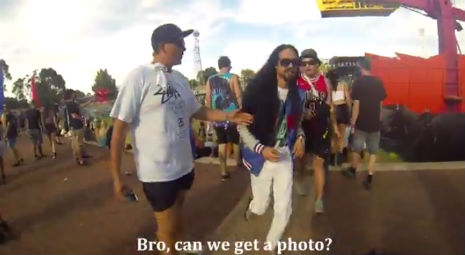
I’m not going to assume that you have all heard of Steve Aoki but for brevity’s sake, he’s an American house musician, DJ, record producer, founder of Dim Mak Records and the son of the guy who founded Benihana. He’s also famous for throwing pies...
Abandoned Bunker Turned into Clever Equine Art Installation
 (Image: Bill Woodrow, public domain)
(Image: Bill Woodrow, public domain)
Today’s lead article featured some pretty amazing abandoned nuclear bunkers, deserted missile silos and ammo dumps from World War Two through the Cold War. But we couldn’t resist also featuring another defunct military structure – this one an abandoned bunker transformed into an art installation on a Danish beach.
But it’s more than just street art. The playful equine sculpture known as Bunker/Mule is one of several created in 1995 by artist Bill Woodrow.
Woodrow writes: “[The sculpture] consists of concrete bunkers along the beach at Blåvand-Oksby, Denmark (part of the Atlantic Wall), mounted with horses’ heads and tails cut from steel. Depending on the tide, the sculptures are either on the shore or in the sea.”
Keep Reading – Discover more cool examples of Art & Design
The post Abandoned Bunker Turned into Clever Equine Art Installation appeared first on Urban Ghosts.
Eyes on drugs

VICE visited a nightclub in Berlin and photographed close-up images of people’s eyeballs while they were under certain er, illegal (and some legal) substances to see it you can tell what drug they’re on by the size of their pupils.
Another year, another awesome Descendents Christmas sweater

SoCal punk heroes the Descendents have turned their Christmas sweaters into an annual tradition—here’s a gander at last year’s edition. This year, instead of emphasizing the noggin of Milo, from their 1982...
Kim Kardashian’s ass brews coffee
diogofalmeidavideo inside

Forget the champagne glass that Kim can balance on her ass, here’s what she can do with coffee…
I think I’ll stick to tea.
H/T Mark Ebner
 (Image:
(Image:  (Image:
(Image:  (Image:
(Image: 


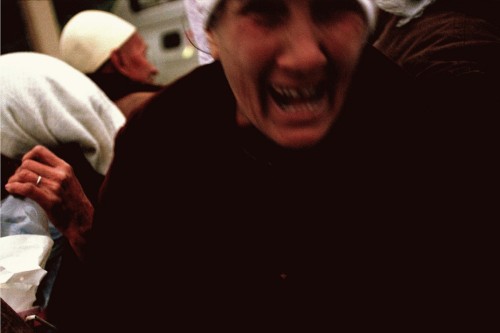


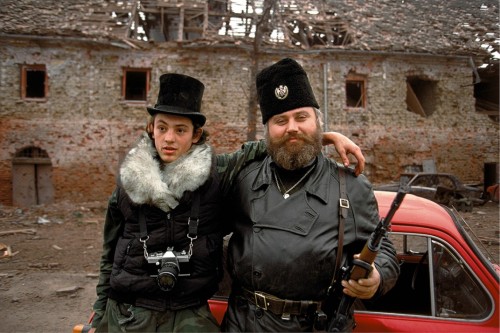
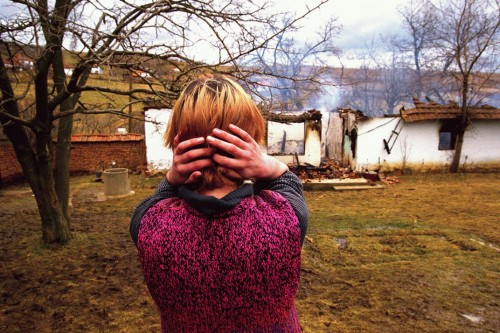







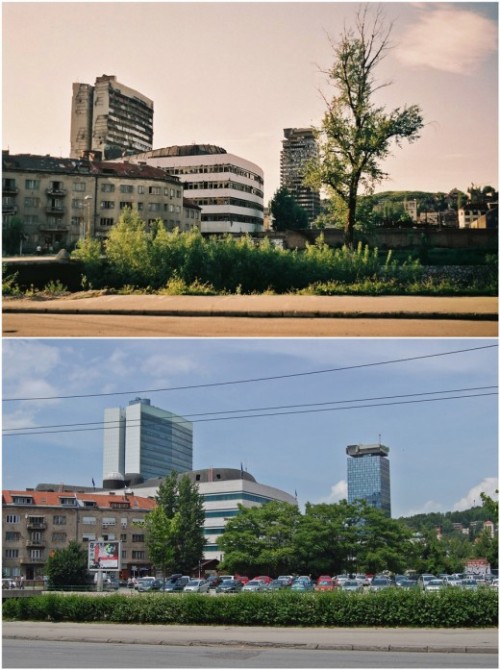





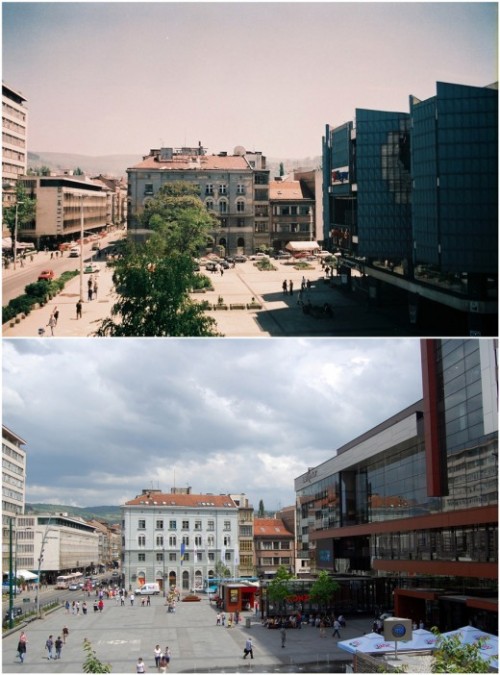
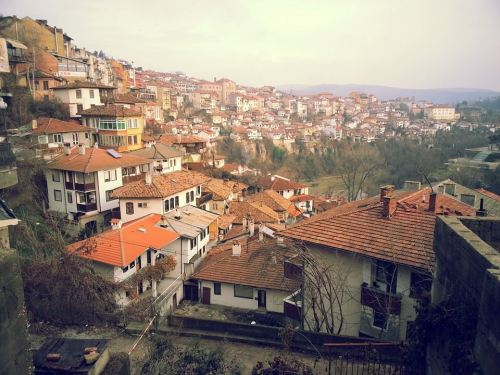
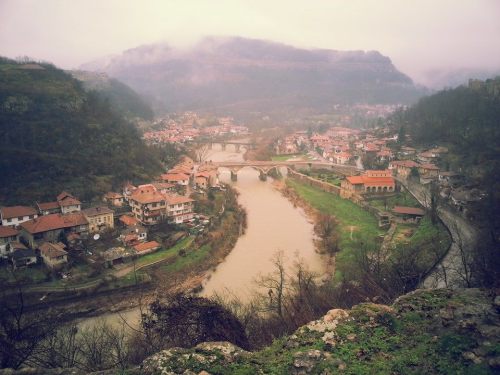

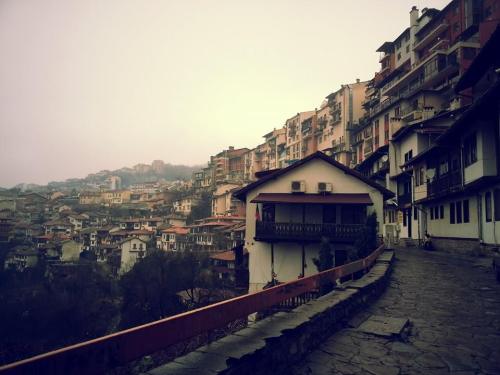
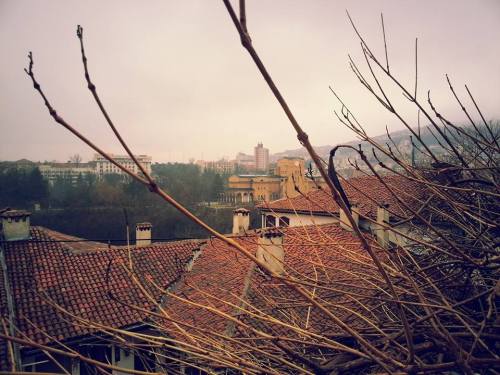
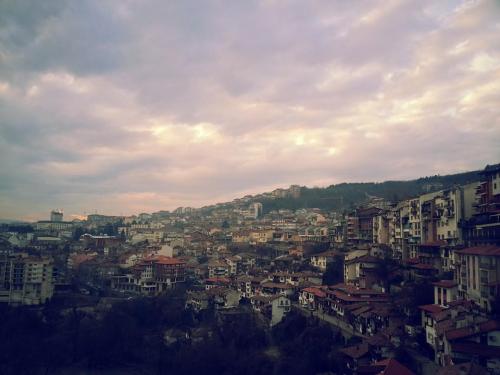



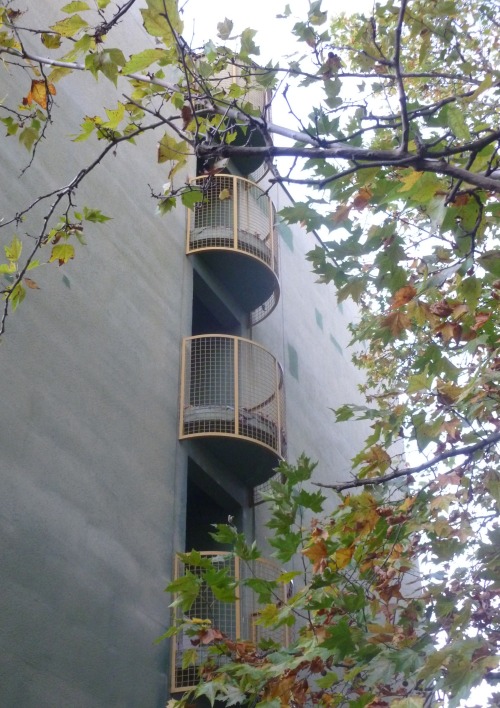


 (Image:
(Image:  (Image:
(Image:  (Image:
(Image:  (Image:
(Image:  (Image:
(Image:  (Image:
(Image:  (Image:
(Image: 


